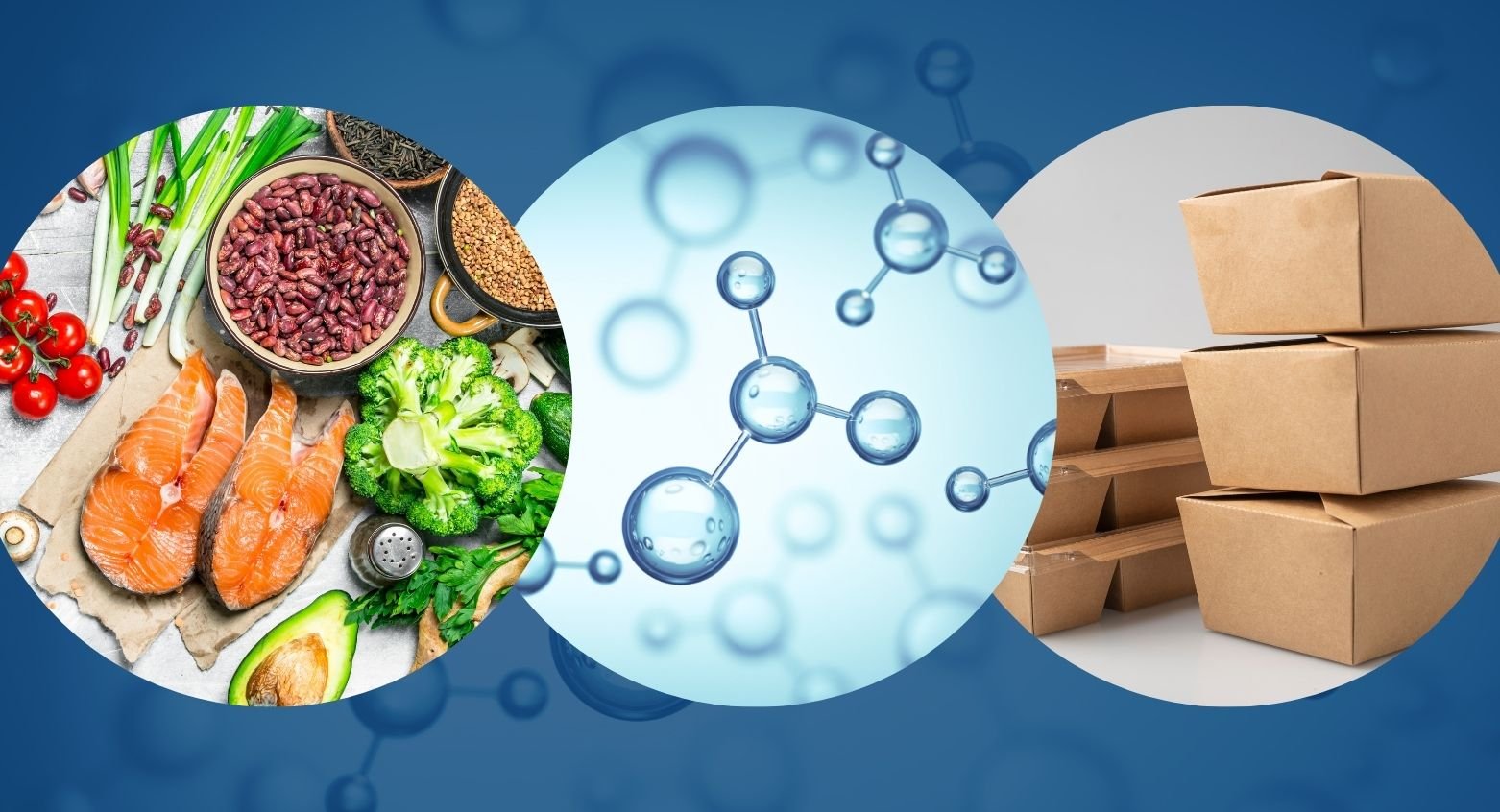They are everywhere. They are accumulating in our bodies and the environment. We often hear these statements in scientific literature and announcements from food and health regulatory agencies. These are PFAS (Per- and polyfluoroalkyl substances) - a group of thousands of molecules used in hundreds of products to make them resistant to heat, water, oil, and corrosion. They have been added to various products, including stain- and water-resistant fabrics and carpeting, cleaning products, paints, fire-fighting foams, and food packaging materials. PFAS have been in use since the 1940s. The carbon–fluorine bond in these molecules is highly stable and resistant to environmental degradation, earning the molecule the nickname “forever chemicals.” PFAS in the environment can enter the food supply through plants and animals grown, raised, or processed in contaminated areas. It is also possible for tiny amounts of PFAS to enter foods through food packaging, processing, and cookware.
These chemicals are under increasing scrutiny due to their potential health risks. PFAS are known endocrine disruptors, meaning they can interfere with hormones. This disruption might be linked to an increased risk of hormone-related cancers like breast or prostate cancer, but more research is needed to validate the correlation. Studies have revealed that long- and short-chain PFAS affects the liver and thyroid hormones. Certain PFAS could impact neurodevelopment by targeting neuron cell differentiation[1] Toxicological studies to evaluate the toxicology of 16 PFAS in rats found that long-chain PFAS were more potent than short-chain PFAS to inhibit mitochondrial function[2] The association between overall PFAS exposure to kidney and testicular cancer has been identified[3].
As research reveals more about these persistent chemicals, regulatory agencies are taking action to limit human exposure and safeguard public health. The US Food and Drug Administration (FDA) has been working to understand the serious health effects of PFAS since 2019[4]. Currently, there is no US Federal legislation limiting or banning PFAS in food contact material, and several states have passed laws regulating PFAS in food packaging, with New York (December 31, 2022) and California (January 1, 2023) among the first ones. Their regulations are similar, prohibiting intentionally added PFAS in plant fiber-based food packaging. Vermont became the first state to enact a law that applies to all food packaging, rather than just fiber-based packs, effective July 1, 2023. There is currently no federal legislation limiting or banning PFAS in food packaging; instead, FDA mandates, especially state-level legislation, are prompting action from the industry. PFAS restrictions in food packaging tend to focus on packaging made of plant-based fibers; these include paper or paperboard because these materials are often treated with PFAS chemicals to make them oil, grease, or water-resistant. Restrictions on PFAS in food packaging are not limited to products used in food service establishments — consumer food and packaging products (paper plates, cups, and bowls sold at retail) are also typically covered in these legislations.
On February 28, 2024, the Food and Drug Administration (FDA) announced that grease-proofing substances containing PFAS materials are “no longer being sold by manufacturers for food contact use in the U.S. market.” Even though this action by the FDA only addresses grease-proofing substances, it is undoubtedly a welcome move to control the risks emerging from these chemicals. According to the FDA, this “announcement marks the fulfillment of a voluntary commitment by manufacturers not to sell food contact substances containing certain PFAS intended for use as grease-proofing agents in the U.S. This FDA-led effort represents a positive step forward as we continue to reevaluate chemicals authorized for use with, and in, food.”
Scientists are diligently working to measure PFAS residues in food packaging, cookware, and other non-stick materials. Our Global Research and Development teams are monitoring the regulations worldwide and have been developing methods to accurately measure these forever chemicals in food matrices and contact materials. Our Research, Development, and Industrialization team at Crete, IL, recently expanded the capability to test and quantify PFAS from food matrices (milk products, meat, fish, fruits and vegetables, water, etc.) to food packaging materials like paper and cardboard. The team led by Dr. Ming Gao has been working conscientiously to get the right accuracy and precision required to quantify these chemicals.
“The presence of significant levels of some intrinsic PFAS compounds within paper and cardboard, alongside potential interference from unidentified compounds, posed challenges in establishing the LOD/LOQ, particularly for compounds like PFBA and PFPeA. To address this, we meticulously screened various food packaging materials, including Kraft paper, parchment paper, butcher paper, uncoated cardboard, and coated cardboard. Among the results of these materials, we identified the final method, LOD/LOQ, with the highest determined values, thereby enhancing the reliability of our results. Additionally, we conducted spike recovery studies at eight different levels for both paper and cardboard to accommodate varying detection thresholds for different PFAS compounds. Furthermore, we performed eight replicates for each batch on two days to ensure method precision and reliability.” Said Dr. Gao.
Connect with one of our team members to explore the depth of our expertise and capabilities in PFAS services. Good Food, Good Health, and a Good Planet are at the forefront of everything we do at Mérieux NutriSciences!
References
[1] https://ntp.niehs.nih.gov/whatwestudy/topics/pfas
[2] Wallace, K. B. et al, Toxicol. Lett. 2013, 223 (3), 257-264
[3] Seyyedsalehi, M. S. and Boffetta, P. Med Lav 2023, 114 (5) e2023040 https://www.ncbi.nlm.nih.gov/pmc/articles/PMC10627102/pdf/MDL-114-40.pdf
[4] https://www.fda.gov/food/environmental-contaminants-food/and-polyfluoroalkyl-substances-pfas
